OnePlus 8T hands-on: Crossing all the T's?
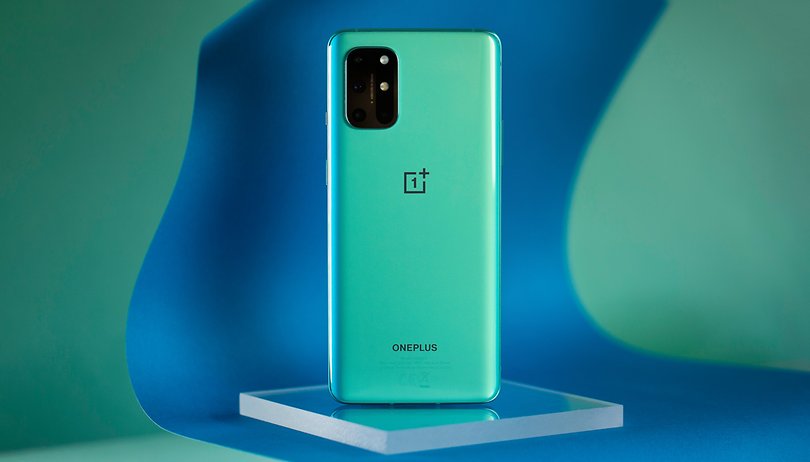

"Ultra stops at nothing." After a pre-briefing and a keynote event, I still do not understand that slogan and the meaning that it tries to convey. But one thing is clear: the OnePlus 8T will be announced this Wednesday, October 14, at the price point of €599 ($704) while doing everything in order to deserve the letter 'T' engraved within the case, following the footsteps of its illustrious predecessors. Is the OnePlus 8T faithful to the heritage of the manufacturer's mid-range flagship series? While waiting for my complete review, here is a sneak peek in my hands-on of the OnePlus 8T for NextPit.
Good
- 120 Hz AMOLED screen
- Snapdragon 865 chipset
- OxygenOS 11 based on Android 11
- Always-on display that stresses on digital wellness
- Warp Charge (65W)
Bad
- Classic 48 MP lens
- No dedicated telephoto lens
- No expandable memory
- No IP certification

Who is OnePlus 8T for?
The OnePlus 8T will be available from 20 October at a price point of €599 ($704) for the 8GB/ 128GB version and €699 ($821) for the 12GB/ 256GB version on the official OnePlus, Amazon, and Fnac/Darty online sites. It will be available in two colours: Aquamarine Green and Lunar Silver, the latter being exclusive to the basic memory configuration (8GB/ 128GB).
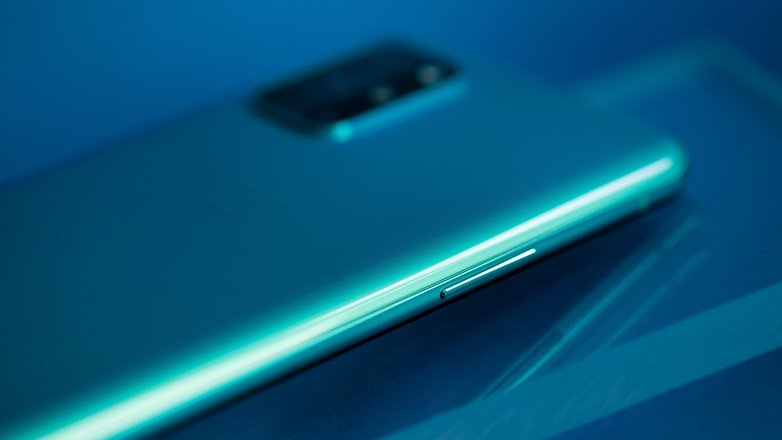
The OnePlus 8T features a 6.55-inch AMOLED Flat Panel Display in Full HD+ resolution with a 120 Hz refresh rate and a punch-hole located in the top left corner for the selfie camera. Underneath the hood lies a Snapdragon 865 chipset, a 4,500 mAh battery that will work with the new Warp Charge 65W fast charge capability, a quadruple lens system anchored by a 48 MP shooter. It is also one of the first smartphones to offer an Android 11-based overlay with OxygensOS 11.
The point of releasing the OnePlus 8T is this: to offer the best of the OnePlus 8 Pro, which sells for €899 ($1,056) while the other would be the staple OnePlus 8 handset, while being somewhat cheaper than these two flagship models. In short, it continues to remain well within the OnePlus T's spirit where price-to-performance ratio is concerned.
The OnePlus 7T, which also sold for €599 ($704), was my favourite smartphone of 2019 in terms of value-for-money in the premium segment. As with OnePlus Nord in the mid-range segment, the OnePlus 8T offers, on paper, a good compromise in the face of the manufacturer's move to the upmarket segment and in terms of pricing.
Fresh design like a nordic breeze
The OnePlus 8T reminded me a lot of OnePlus Nord, which was, of course, a premium-looking device that does not break the bank. During the pre-briefing, OnePlus assured me that the Aquamarine Blue colour is not the same as the OnePlus Nord's Blue Marble. After putting the two smartphones side by side, the OnePlus 8T has a turquoise hue that does tend to lean slightly more towards green tones as opposed to the OnePlus Nord.
With this all-important observation placed aside, the design of the OnePlus 8T ticks all of the right boxes when it comes to a top-of-the-line model. A glass back, a metallised aluminum frame and punch-hole camera in the front screen. The 6.55-inch screen is flat, which is different from the curved edges of the OnePlus 8 and 8 Pro.
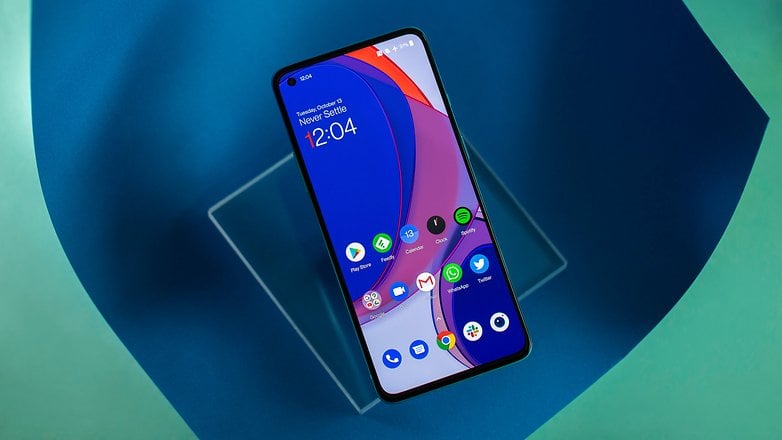
It is deemed to be fashionable now to move away from curved screens, so OnePlus is not forging a new path but following a market trend here, even though I was assured that the screen still retained a slight curve, with 2.5D corners. There are also certain quarters that like to mock the size of OnePlus smartphones.
Personally, I didn't find the OnePlus 8T to be particularly massive, and I appreciate a larger than average form factor anyway. The overall grip of the smartphone is also very good, where the slider button is well-positioned to handle the vibration/ringtone modes - something that I will never get tired of.
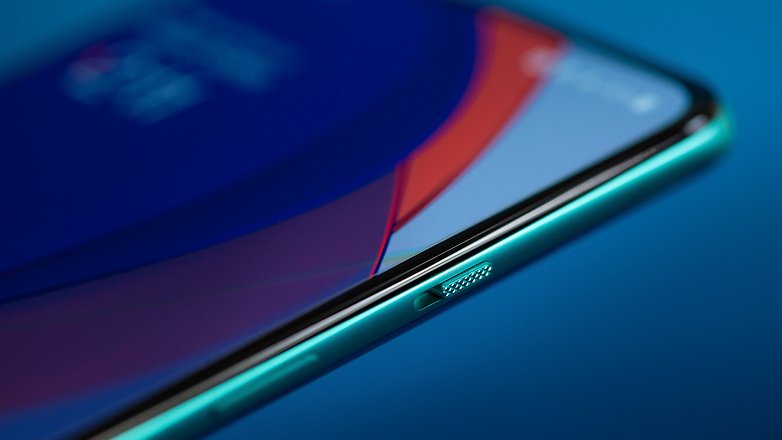
As for the camera module that has ended up in a rectangular manner, I am relieved that there is a far less protrusion than expected. Unfortunately, there is no IP certification for waterproofing, which could be a deal-breaker for some. As on the models preceding the OnePlus 8 and 8 Pro, this is, in fact, waterproof, but the manufacturer preferred to save some costs to obtain official certification.
A bright 120 Hz flat display
The OnePlus 8T display is a 6.55-inch AMOLED panel in 20:9 format, delivering Full HD+ resolution, 402 dpi, and a 120 Hz refresh rate. The entire display is HDR10+ certified, so you are guaranteed of having a fantastic viewing experience.
The manufacturer announced a maximum brightness of 1,100 nits, compared to 800 nits on the OnePlus 8 and 1,300 nits for the OnePlus 8 Pro. The display's touch sampling rate can run up to 240 Hz (the number of times a touch is recorded with your fingers), which is perfectly good for responsive gaming controls.
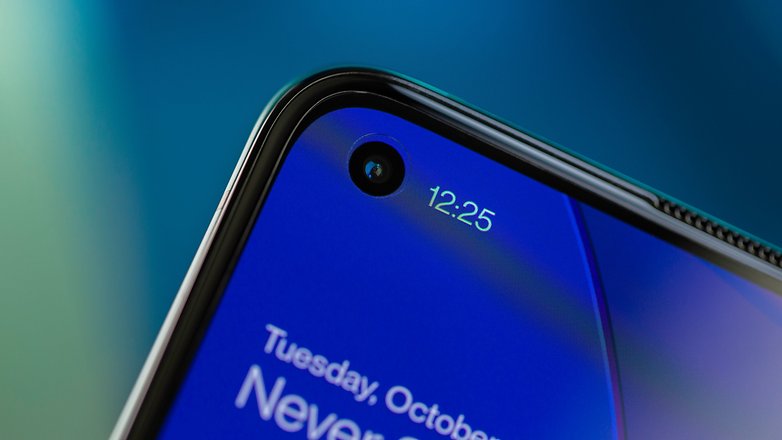
On paper, all of the ingredients are there for a fluid and immersive visual experience. It remains to be seen what impact the 120 Hz will have across a range of on-screen activities. As with most other manufacturers, this refresh rate is dynamic and its frequency varies depending on the use (gaming, video, navigation, etc).
OnePlus has really spoiled their fans since the beginning when it comes to an entire range of customisation options for additional visual comfort with a mono- or chromatic-playback mode, a colour accentuation mode, or an always-on display (that unfortunately, is not as customisable as under ColorOS 11) - and they continue in this rich tradition with the OnePlus 8T.
OxygensOS 11 based on Android 11
The OnePlus 8T is the brand's first smartphone and one of the first non-Pixel Android smartphones to hit the market with Android 11 pre-installed. OnePlus's OxygenOS 11 new overlay has received a lot of attention, especially in the US tech press for its cleverness (which is odd since OnePlus's implementation is far from being dominant in the US, but the press has spoken).
The main change made by OnePlus that showed the manufacturer's intent would be moving away from the stock Android interface, at least in terms of its visuals. The close resemblance to Google's UI in the past happened to be the trademark of OxygenOS, and proved to be a hit with its user base.
With OxygenOS 11, OnePlus seemed to have wanted to retain the spirit of stock Android in terms of fluidity but also injected a more personal touch, in addition to exclusive features that have long been proudly touted by the fanbase, such as the Always-On display.
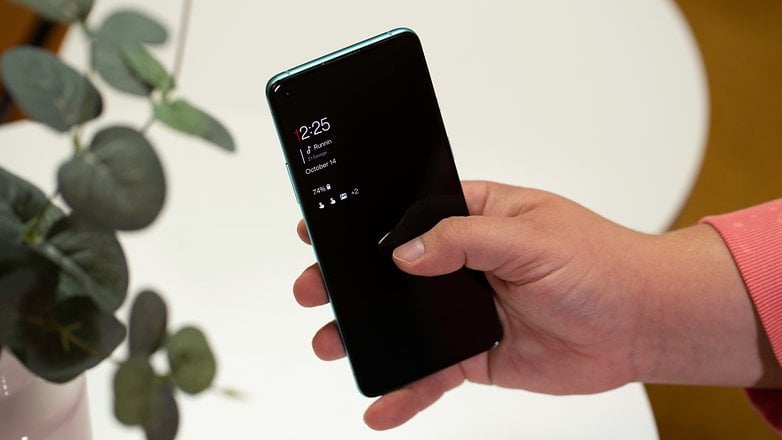
App names are displayed in an oversized font, which is good. Most of the information and commands have been shifted down to the lower segment of the screen. In short, the idea is to create a hierarchy between information and tactile options that can be accessed via your fingers.
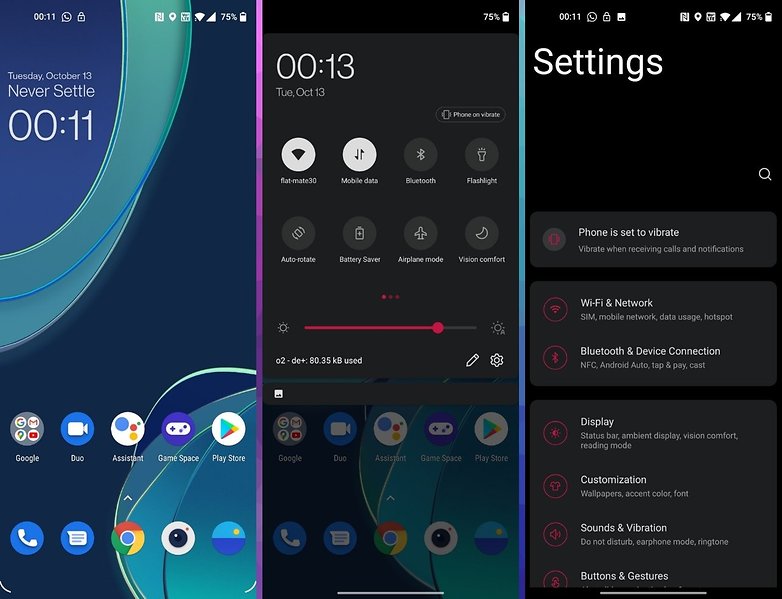
In a blog post that announced the beta phase of its overlay, OnePlus explained that stock Android has simply not been optimised for modern day smartphones that are equipped with larger screens. The manufacturer went on to detail the use of anthropometric data in order to create a thermal map of screen interactions, resulting in the ultimate ratio for optimising content and user interface elements.
Visually, you're bound to be in for a slight shock. The interface is far more streamlined than before. What I liked about OxygenOS was that it was a bit like the Arial Black where the Android UI is concerned. Everything was clear, but also very detailed, where each option showed off its purpose, in short, the numerous customisation possibilities.
With OxygenOS 11, we move on to a much more simplistic and minimalist graphical layout. All information must be visible at a glance and in a clear manner. OnePlus does not totally abandon customisation, but clearly shows its willingness to offer a more mainstream and more accessible UI.
If we talk about customisation, we can mention the Always-on display which sports a feature known as "AOD insight". Basically, it's a visual indicator that takes the form of a coloured vertical bar that informs you of just how much screen time you are utilising. You have an unlock counter and the bar changes colour according to the length of your screen time.

We also have a reading mode for better eye comfort, armed with a chromatic mode and a monochrome mode. A "canvas" mode in the customisation settings allows you to draw an abstract drawing that takes the contours of one of your photos, like a sketch. Unfortunately, I did not have this feature on my updated version of OxygenOS 11.
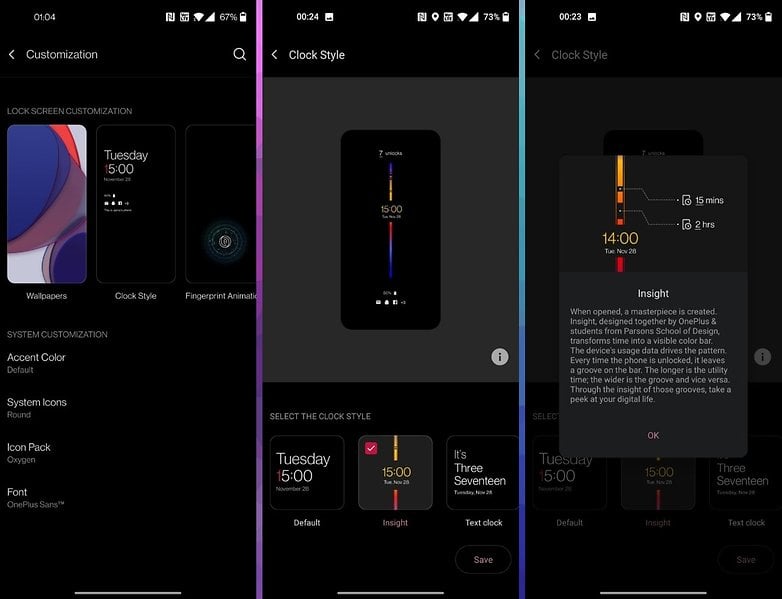
OnePlus has also made a small update to the Zen Mode for digital wellness, enabling you to create group sessions to synchronise your phases of digital detox with several people. Accountability certainly helps one achieve one's goals, doesn't it?
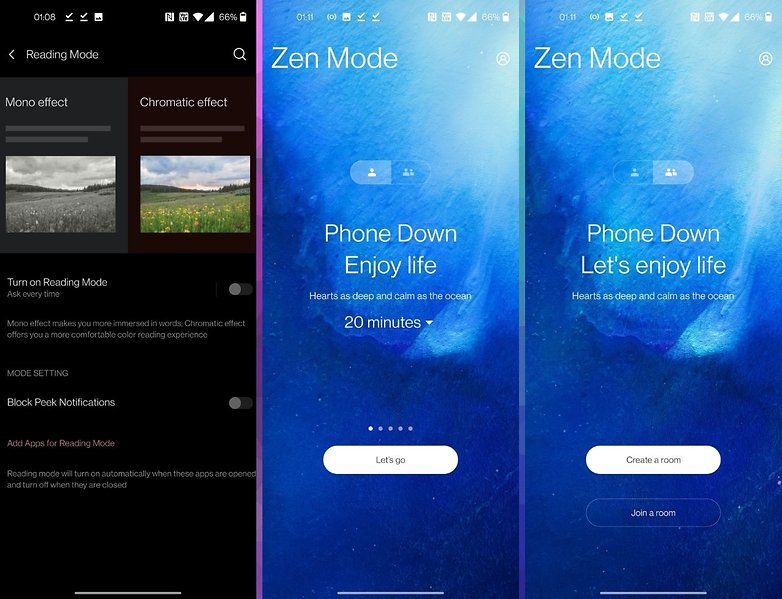
Snapdragon 865 and Fnatic Mode revised
The OnePlus 8T is powered by Qualcomm's Snapdragon 865 chipset that is mated to an Adreno 650 GPU. There will be no overclocked version with the Snapdragon 865+, just like the OnePlus 7T in its day and the Snapdragon 855+. Without a Pro model for its 8T range, OnePlus doesn't want to introduce other models that might cannibalise its other devices - which is a smart move.
I'm not going to offer you graphic benchmarks in this hands-on, but will obviously include them in my full review. But we're starting to get an idea concerning the performance of this processor, which is simply the most powerful for Android smartphones right now, not that we really need all that power anyway.
- Also read: Gaming smartphones: Do you need a 144 Hz screen, 16 GB RAM and the latest Snapdragon chipset?
In terms of raw power, the OnePlus 8T has what it takes to compete with the best gaming smartphones on the market like the Asus ROG Phone 3 or the Nubia RedMagic 5G. OnePlus explained to me that by shifting its camera module that was previously located in the upper left corner, this allowed the addition of new components for better temperature control.
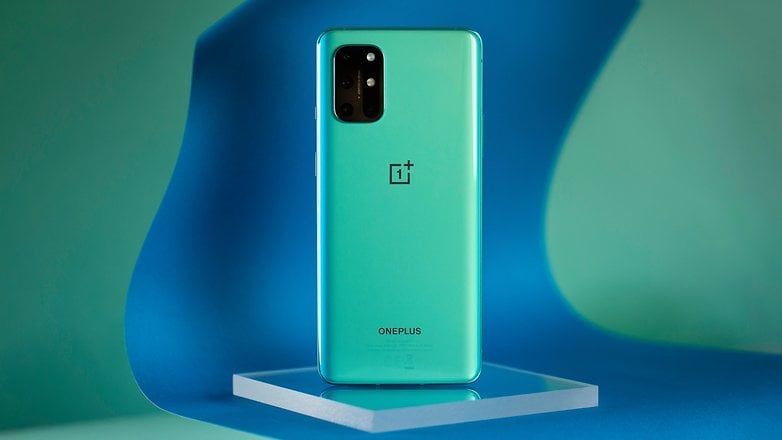
Yeah, it's all well and good to have a fully loaded SoC, but if it all of those turn the smartphone into a toaster after a short while, it's not much use. So you get a bigger surface area for the steam chamber, 12 temperature sensors, as well as 5 graphite plates and silicone grease all over the place in order to limit overheating.
I'll have to abuse the OnePlus 8T with long gaming sessions and several benchmarks in order to see if the smartphone will introduce thermal throttling halfway through, which automatically slows down its performance when the temperature rises too much to prevent overheating.
The dedicated Fnatic gaming mode is less advanced than on pure gaming smartphones, but the interface far more user-friendly. You can make the game menu appear contextually, like a pop-up once you're in the game. You have a temperature indicator, battery, have Instagram or Whatsapp in windowed mode (what's the point?!), the option to block notifications, updates, etc.

A quadruple 48 MP photo module
When it comes to the camera module, the OnePlus 8T includes a quadruple lens system with the following configuration:
- Main sensor: Sony IMX586, 48 MP, OIS and EIS, f/1.7
- Ultra-wide angle: Sony IMX481, 16 MP, f/2.2, 123° FOV
- Macro: 5 MP
- Monochrome: 2 MP
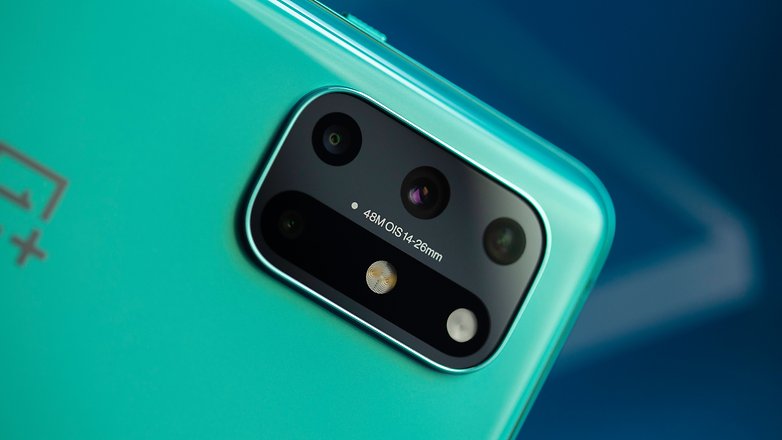
On paper, I doubt the usefulness of both macro and monochrome sensors. In my opinion, and I may be wrong since I haven't tested them, it's simply a marketing push to throw in more sensors. In any case, I would have greatly preferred a dedicated telephoto lens for additional versatility.
The camera module is now rectangular in shape and located in the upper left corner on the back of the smartphone. OnePlus explained to me that the Nightscape mode also works in video and will activate automatically, somewhat akin to iOS, depending on the lighting conditions.
It's a camera module that toes the industry line after all, and there's nothing extravagant about it at this price. OnePlus has deployed numerous software updates to its photo application since the launch of OnePlus 8 and 8 Pro, so I will see in my full review whether or not it will come with the latest photo app version or not.
A quick note for the front-facing camera: it is a Sony IMX471 16 MP sensor, without any IOS with an aperture of f/2.4. The OnePlus 8T can also record video at up to 4K 60 fps.
The Warp Charge 65T, a killer feature?
The big news, supposed to be THE killer feature of the OnePlus 8T, is not a hidden camera under the screen as I had hoped, but the Warp Charge 65 feature. This 65W fast charge (only with the dedicated charger, otherwise it 'plods' along at 27W) is supposed to be able to charge the OnePlus 8T's 4,500mAh battery from 0 to 100% in 39 minutes or from 0 to 58%, or enough for one day's use (as the manufacturer claims), in 15 minutes.
OnePlus explained to me that Warp Charge 65 is based on a dual battery system where each battery charges at the same time without increasing the voltage or temperature too much. The 10 Volts are divided by two and delivered at 6.5 amps, so each battery is simultaneously recharged in 5 V/6.5A each.
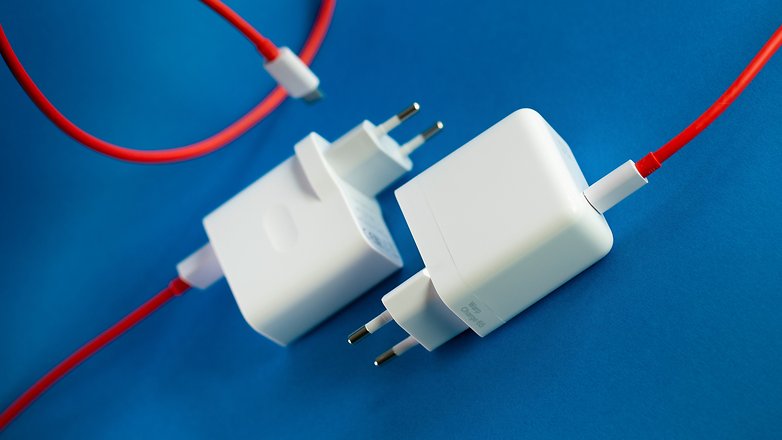
Most of the technology of the Warp Charge 65 lies in the adapter, and not in the smartphone. There's an extra encryption chip in the charger as well as in the USB-C cable in order to control the temperature (in addition to the 12 thermal sensors in the smartphone).
Again, this is not a huge innovation if you look at the "competition" over at Oppo or Realme. But that's the OnePlus philosophy: you only implement a feature if it's fully optimised, while reducing costs as much as possible (no, not like Apple, since Cupertino waits far too long and maximises costs instead of reducing them). It will thus be necessary to wait for a Warp Charge 125.
I will tell you in my complete review if the battery and Warp Charge 65 perform well in day-to-day use.
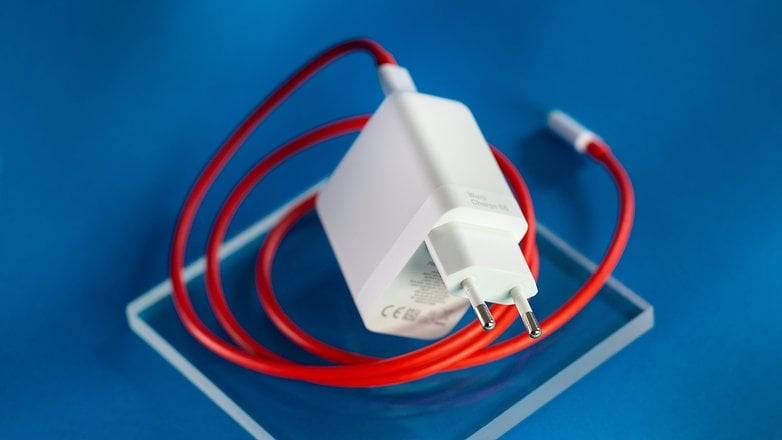
Conclusion: My first impressions
I had a lot of complaints about OnePlus in 2020, mainly about the move to the upmarket segment, but especially about the price of the OnePlus 8 and OnePlus 8 Pro. With the OnePlus Nord, the manufacturer already showed its willingness not to abandon the price/quality ratio in favour of a race for the premium segment with a humble disposition.
I even titled my OnePlus Nord review "All is Forgiven". It's as though the brand got tired of hearing from me, or rather reading my review, raging on and on like the fanboy I am.
And with the OnePlus 8T, which will be sold at the same price as the OnePlus 7T at €599 ($704), the brand clearly offers one of the most competitive high-end smartphones on the market. On paper, it is a product that respects the spirit of its range, and this makes it deserving of wearing said letter on its name.
Its only rivals in this segment are the Realme X50 Pro, the Xiaomi Mi 10T Pro (which I will review really soon), and the Poco F2 Pro (which Xiaomi decided not to send to us for a review). In any case, €600 ($705) is the price that a flagship should cost in my opinion. Anything that exceeds this price point will require a revolutionary form factor or really innovative hardware in order to charge above-market rates, somewhat like the Samsung Galaxy Z Fold 2.
So I can't wait to offer you a long and extensive review of this OnePlus 8T to see if the manufacturer lives up to its reputation with a OnePlus fanboy or otherwise.
Also read on NextPit:



















I use OnePlus phone for five years, I think these are the best Android phones
Very costly but I think effective one.
It's still overpriced considering the bugfest and engineering crapshoot history of OnePlus. They sell hype and sizzle while underperforming daily use.